Value of Artist Jorge a Murillo Mexico Art Wirk
W Window, Exhibition view on OMR Gallery, United mexican states City.
Photo © Jorge Méndez Blake.
Seeing Verse: Mexican Artist Jorge Méndez Blake Transforms Literature into Sculpture and Visual Art
Jorge Méndez Blake is a mixed-media, conceptual artist from Guadalajara, Mexico, whose piece of work revolves around books, libraries and literature. An architect by profession, Méndez Blake has evolved a conceptual linguistic communication, both reductive and metaphorical, that translates literary texts into images, sculptures and installations. Based on his belief that "writing is itself a kind of construction and reading is a way of cosmos", he transforms the literary into the spatial thereby giving a physical dimension to the deed of reading. His work focuses on the themes classic authors pose through their books, as well as the value of literature as a means of communication and a depository of knowledge; quite fittingly, Mendez Blake produces and catalogues his work in a serial of conceptual chapters, each focusing on a different theme, author or approach.
The Castle 2007 Bricks, edition of Franz Kafka's 'The Castle' 2300 x 1750 ten 400 cm Photo © Jorge Méndez Blake.
With an architectural background and a life-long of love of books—he was an editor at his academy'south literature magazine— information technology'south no wonder that the fusion of architecture and literature, the "ii strongest manifestations of culture" as Méndez Blake says, is such a major preoccupation for him. An exemplary example is "Chapter Vi - The Castle" (2007), a 22m long brick wall constructed by stacking bricks 1 on top of the another without mortar, in the centre of which, crushed underneath, is an edition of Franz Kafka's The Castle. The book's theme, the impossibility of its central character ever reaching the eponymous Castle, is thus re-imagined as the impossibility of ever physically reaching the volume while the same fourth dimension, this concrete metaphor of the book's plot spatially unfolds the book's narration.

The Castle
2007
Bricks, edition of Franz Kafka'south 'The Castle' (detail)
2300 x 1750 10 400 cm
Photograph © Jorge Méndez Blake.

Ceboruco Volcano. Structure II
2012
Physical blocks and coloured pencil
Dimensions variable
Photograph © Jorge Méndez Blake.
Ceboruco Volcano. Structure Two (particular) 2012 Concrete blocks and coloured pencil Dimensions variable Photograph © Jorge Méndez Blake.
Taking the concept of literary architecture 1 footstep farther, "Chapter XXIV – Monuments (2012)" pays homage to some of the greatest writers from the past two centuries by creating physical edifices inspired by both their lives and their texts. The Camus Monument, a re-create of Camus' L'étranger nether a belfry of bricks reflected past a mirrored table-pinnacle, is a sculptural metaphor of the book'due south narrator who can see nothing beyond his ain self and who is thus crushed by society, whereas the Emily Dickinson Monument, an all-white replica of her house in Amherst, Pennsylvania with a missing façade revealing a hollowed-out, red interior, alludes to the poet's extremely introverted life. The minimalist appearance of these works belies a complex conceptual procedure by which the artists distils the authors' ideas and idiosyncrasies into his art.
Vita activa / Vita contemplativa (Como la lluvia) (particular) 2015 Book, plinth 109 x 56 10 38 cm Photo © Jorge Méndez Blake.
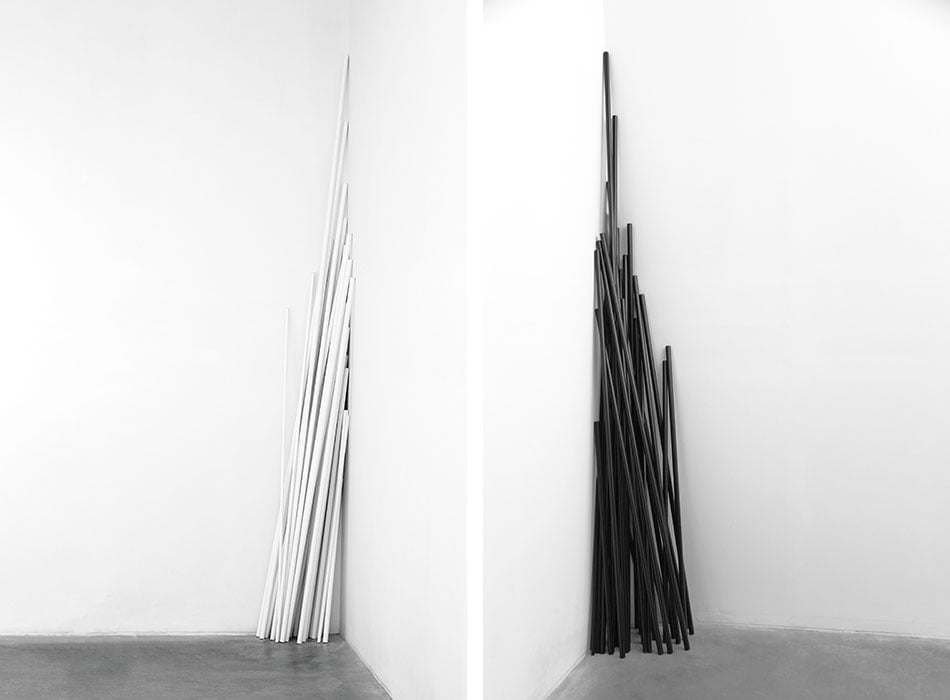
Left:
Chamber Music (James Joyce). White
2014
Aluminum tubes,electrostatic painting.
36 pieces
Variable heights: 80.eight – 294.7 cm ten 1.l – 2.54 cm
Right:
Sleeping room Music (James Joyce). Black
2014
Aluminum tubes,electrostatic paint.
36 pieces
Variable heights: lxxx.eight – 294.seven cm x 1.50 – 2.54 cm
Photo © Jorge Méndez Blake.
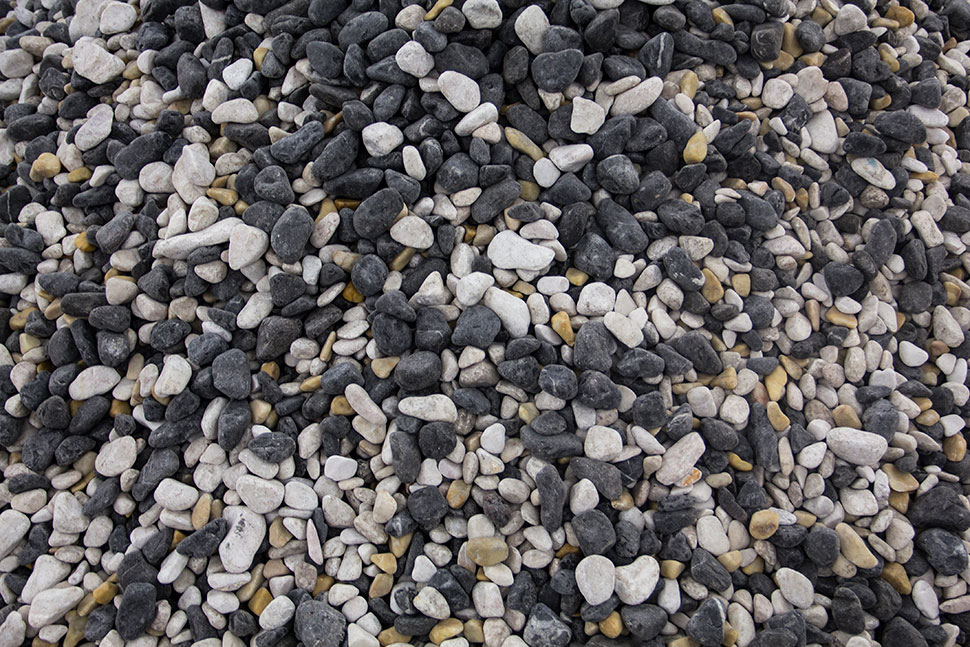
The Mountain that Took the Place of a Poem ( For Emily)
2016
Metallic, marble
150 x 250 ten 250 cm
Photo © Jorge Méndez Blake.
The visualisation of verse is some other area of great involvement for Méndez Blake who has tackled information technology from several angles. In "Chapter XXV – Poems" (2013) he has created monochromatic wall paintings based on the works of Hart Crane, Paul Valéry, and José Goristiza by translating their poems' lines into solid jagged strips, literally blocking out their pregnant and thus imbuing them with a new, pictorial dimension. In a more sculptural approach, "Chamber Music (James Joyce)" from "Chapter XXXII - Measuring Poetry" (2014) consists of 36 fe tubes of varying lengths leaning against the gallery wall; representing the 36 poems in Joyce's collection, each tube has the length of a poem if its words were placed next to each other in a line. For his latest body or work, "Chapter XXXV – Ventana Poniente" (2016), the artist has collected all the dashes in all six volumes of Dickinson's poems and transferred them on 10-human foot tall linen canvases using cut-outs and acrylic paint. The dashes, signifying a pause betwixt the lines, a moment of reflection or doubt, visualised in such a grand style convey the poet's emotional turmoil that lay behind the poems' creation.
From an Unfinished Piece of work (The Journal of Julius Rodman) (detail) 2014 Aluminum, lacquer, silk screen print 85 pieces of fifteen x fifteen ten 15 cm; 10 10 10 10 10 cm; 5 10 5 x five cm Final dimensions variable Photograph © Jorge Méndez Blake.

Untitled
2015
Wood, oil lamp
45 x 20 10 twenty cm
Photograph © Jorge Méndez Blake.

It Was a Pleasure to Burn X
2015
Coloured pencil on paper
150 x 120 cm
Photograph © Jorge Méndez Blake.
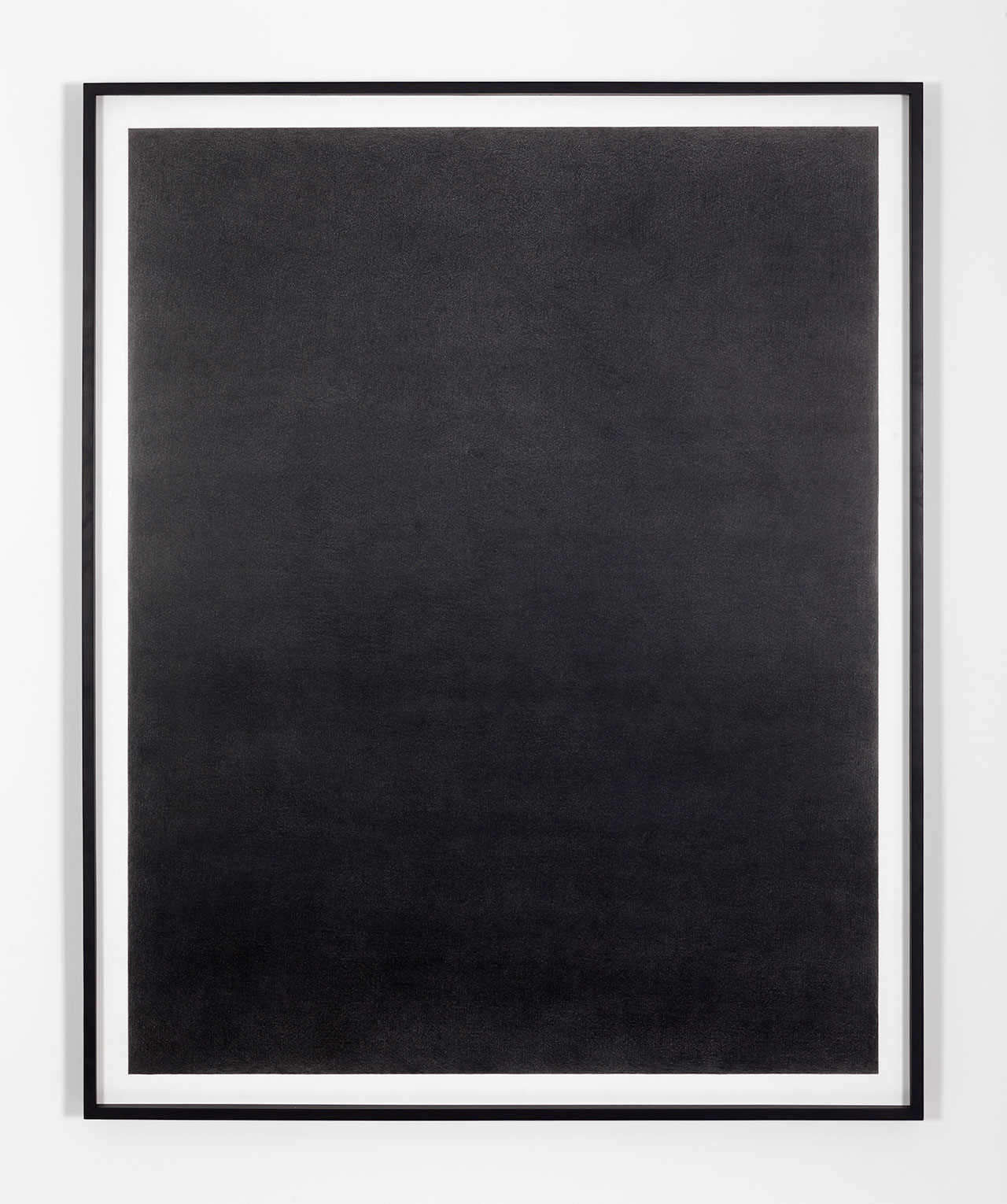
Empty Bookshelf II
2011
Coloured pencil on paper
150 x 120 cm
Photo © Jorge Méndez Blake.
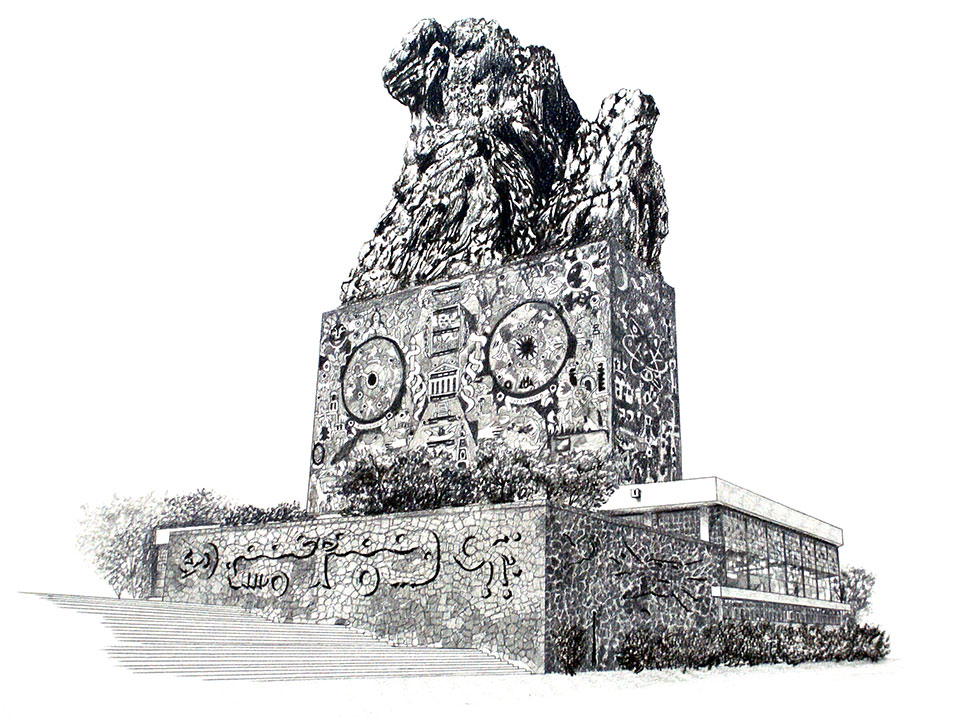
Project for University City Central Library Improver II (detail)
2009
Pencil, coloured pencil, paper
100 10 seventy cm
Photo © Jorge Méndez Blake.
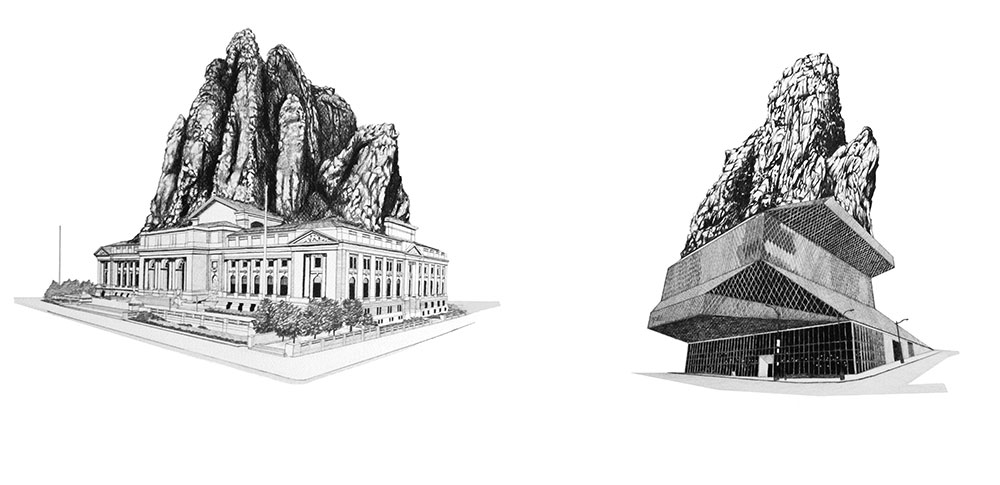
Left:
Project for New York Fundamental Library Addition
2009
Pencil, coloured pencil, paper
100 x 70 cm
Right:
Project for Seattle Central Library Add-on
2009
Pencil, coloured pencil, paper
100 x 70 cm
Photo © Jorge Méndez Blake.

Du fond d'united nations naufrage
2011
Bricks, edition of 'Poésies et autres textes' by Stéphane Mallarmé
161 x 120 x 106 cm
Photo © Jorge Méndez Blake.

Dedicatorias
2015
Fine art print
Polyptych of 8 pieces of 100 ten 80 each
Photograph © Jorge Méndez Blake.
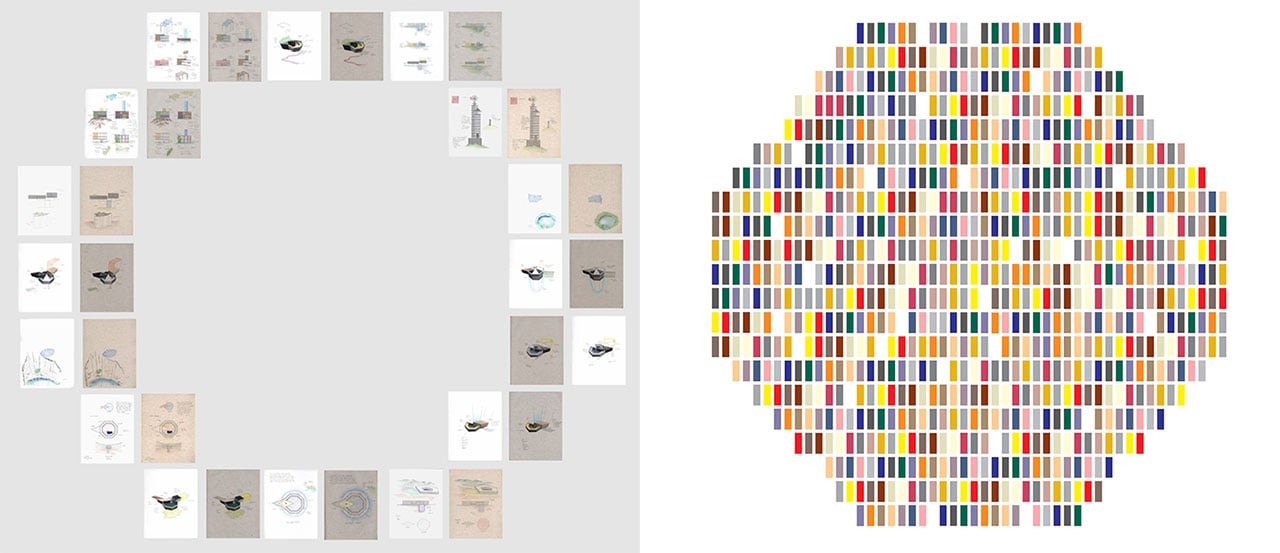
Left:
Projects for Romeo and Juliet Library
2009
Right:
Study for a Library About Honey
2009
Paint on wall
Dimensions variable
Photo © Jorge Méndez Blake.
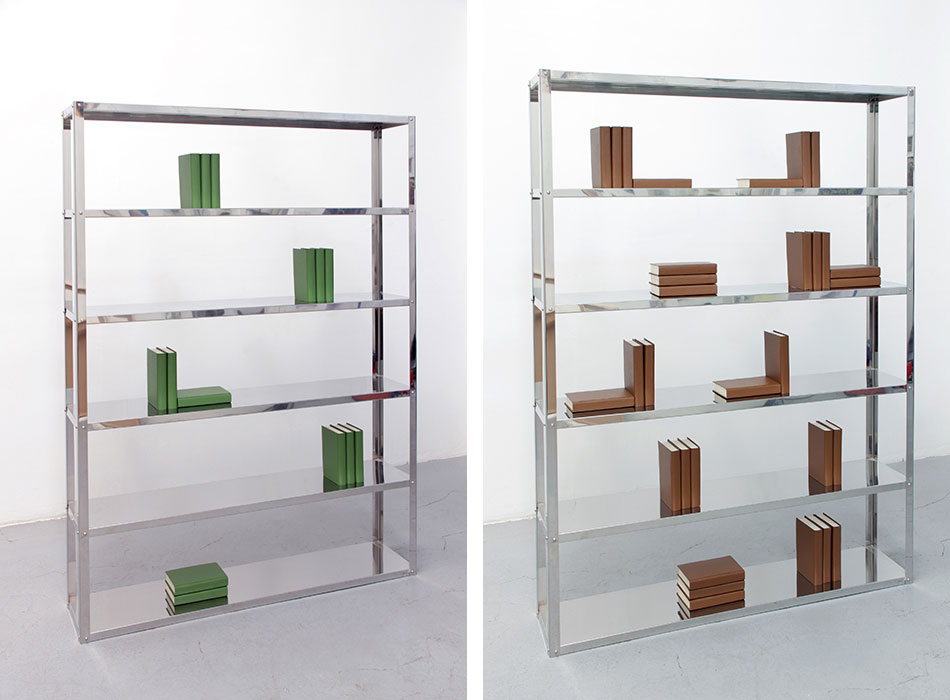
Left:
Werther Bookshelf
2009
Stainless steel, books
14 books
200 ten 145 10 xxx cm
Right:
El amor en los tiempos del cólera
2009
Stainless steel, books
31 books
200 x 145 x 30 cm
Photo © Jorge Méndez Blake.

Dearest Max, My Last Asking
2015
Neon
8 x 185.5 cm
Photo © Jorge Méndez Blake.
Source: https://www.yatzer.com/jorge-mendez-blake
0 Response to "Value of Artist Jorge a Murillo Mexico Art Wirk"
Post a Comment